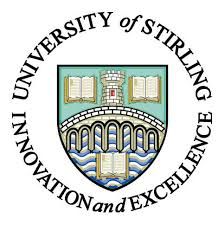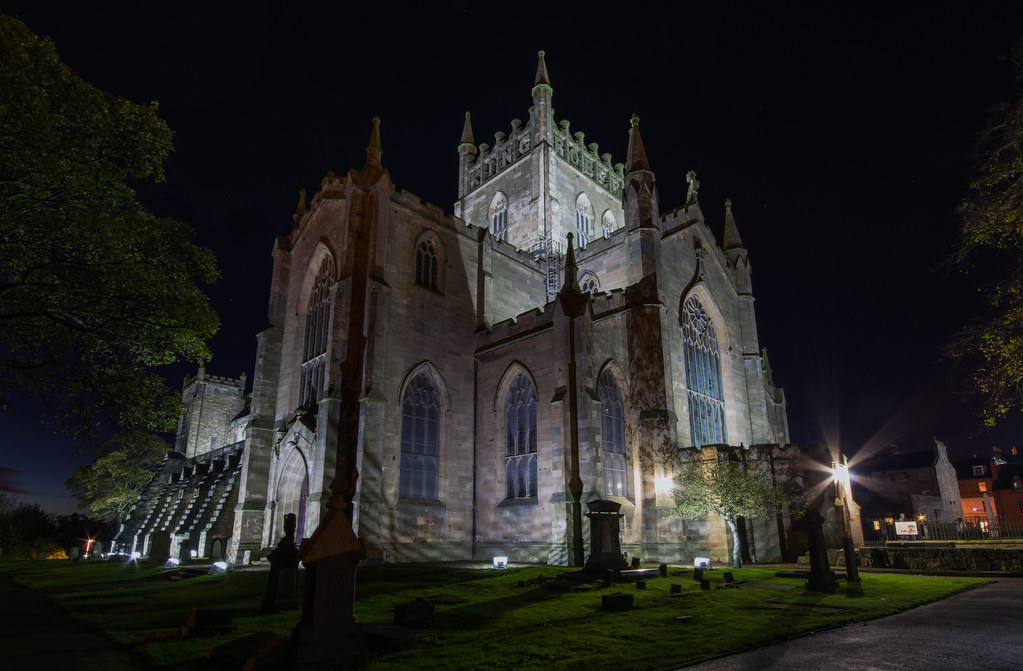Dunfermline Abbey Ground-Penetrating Radar Project, 2016-22
Scroll down to download our open-access interpretive report (1st ed., 2019) and data reports.
EXPANDED 2nd EDITION INTERPRETIVE REPORT NOW AVAILABLE:-

Over the last two decades Stirling research colleagues, often working within our commercial unit History Tomorrow or the Centre for Environment, Heritage and Policy, have developed expertise in the interdisciplinary study of Scotland’s rich medieval ecclesiastical heritage. In doing so, we seek to combine historical research, an understanding of church liturgy and architecture, environmental data, the results of geo-physical surveying and archaeology, and an awareness of modern heritage practice and values, to provide a deeper understanding of the complex lives of these buildings, their estates and their worshiping communities.
Our work has thus included exploration of Glasgow Cathedral, St Andrews and Whithorn Cathedral Priories, the abbeys/priories of Melrose, Dryburgh, Sweetheart, Coupar Angus, Lindores, Restenneth, Cambuskenneth and Arbroath, and numerous parish churches and smaller chapels. Our multi-discplinary methodology was also the driving force behind Stirling’s collaboration (by colleagues Richard Oram and Tom Turpie) with the University of St Andrews on the Corpus of Scottish Medieval Parish Churches database from 2011, and forms a central strand of the University’s formal research and professional training partnership with Historic Environment Scotland and Forth Valley College agreed in 2017.
The various strands of our current work in and around the Benedictine Abbey of Dunfermline in Fife, site of the royal mausoleum of the 11th to 14th centuries, further underline the value of our approach. Michael Penman’s interest in royal piety, liturgy and church monuments saw him invited by Dunfermline Abbey Church Kirk Session to apply non-invasive ground-penetrating radar [GPR] through the foundations and surrounding ground of the modern Abbey Church of Dunfermline (begun in 1818) in search of evidence for the overbuilt monastic choir of the medieval abbey and its many royal burials and altars. These national spiritual treasures and their settings had been lost at the Reformation of 1560 and through subsequent centuries of re-use and neglect.

Dunfermline Abbey is an ecclesiastical site of huge importance. It was the cult centre of Scotland’s only officially canonised saint by 1249, Queen/St Margaret (d.1093), and the resting place of seven kings of Scots by 1329 – including David I (d.1153) and, most famously, Robert I/Bruce. This is Scotland’s equivalent of medieval England’s Westminster Abbey or France’s St Denis Abbey (Paris), both of which, like Dunfermline, were great Benedictine royal cult churches and mausolea dedicated to the Holy Trinity, and served as major political as well as religious centres. However, so much of Dunfermline’s Abbey’s spiritual and material history in this regard has remained lost or obscured.
We had invaluable financial support for our surveys from the GWS Barrow Award, the Strathmartine Trust, the Royal Society of Edinburgh, the Hunter Archaeological Trust, and the Faculty of Arts & Humanities of the University of Stirling. Our work was undertaken over three seasons, 2016-19, led by Erica Carrick Utsi of EMC Radar Consulting (supported by colleagues from OJT Heritage and Atlas Geophysical):
2016 – surveying of the Abbey Church interior northern aisle, central crossing and vestry.
2017 – surveying of the central ‘choir’ atop the medieval altar site and around the ‘Bruce grave’ uncovered by building work in 1818; and of the eastern and western exteriors of the Abbey Church North Transept, atop the medieval Lady Chapel.
2019 – surveying of the exteriors of the Abbey Church South Transept.
2022 – surveying of the Abbey Church interior southern aisle, including under the Memorial Chapel, and confirmation scans of some north transept and inner chancel/dais sections.

The temporary embargo on our fieldwork results has now been lifted and we can make available both our three survey reports and our overall illustrated interpretive report as open-access pdf downloads:

Stage IV (2022) data report now available:-
These reports are also available via project partner Historic Environment Scotland’s CANMORE database – https://canmore.org.uk/collection/2103329/details/

GPR time-slice extracted at 44ns from the 250 MHz data, showing further potential burials at the west [5/?] of Dunfermline Abbey Church’s north aisle [© EMC Radar]
By combining our survey results with the fragmentary medieval evidence, the reports of antiquaries who investigated the choir site c.1560-c.1879, past modern archaeological excavation, and comparison with analogous monastic choirs and medieval mausoleums throughout the British Isles and Europe, we have been able to attempt a cautious re-creation of Dunfermline’s monastic choir, royal burial grounds and pilgrimage shrine(s). We hope this helps shift away from past over-focus on just a few elements of this famous site – chiefly Robert Bruce’s grave – and allows us to re-envisage the abbey as a complex spiritual and physical whole, evolving as a community over time. In challenging a number of preconceptions and other projects’ arguments about Dunfermline (and Bruce’s grave and tomb) we hope this work contributes to further debate and investigation of this fascinating church and its worship.

Some of this future research will be undertaken under the continuing umbrella of the Dunfermline Heritage Partnership (2015-) and emerging Abbey Church-led redevelopment plans. In addition to the Abbey Church, we are very grateful to be able to acknowledge the support and input of the following collaborating bodies on the DHP throughout the course of our GPR surveys:
Fife Council Fife Pilgrim Way Historic Environment Scotland
And follow the links or menu above to read about Stirling colleagues’ contribution to further ecclesiastical heritage projects in and around Dunfermline Abbey and Fife, and to access downloads of some of their published research.

